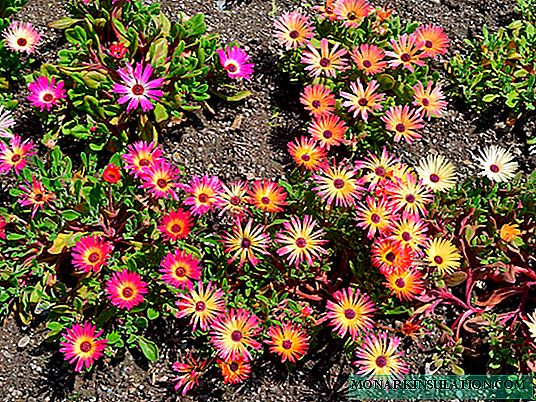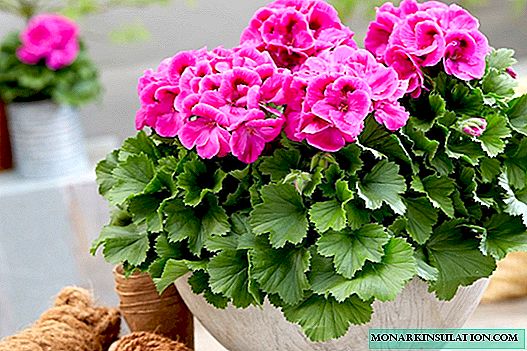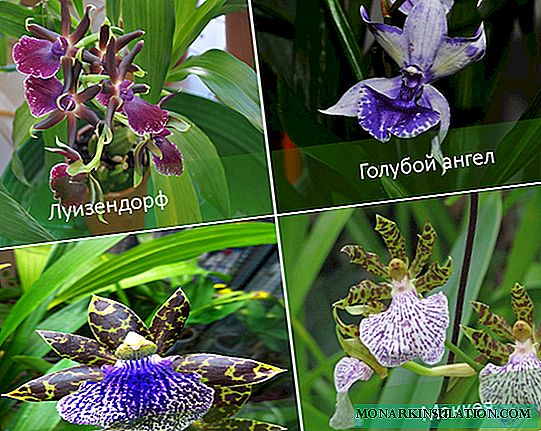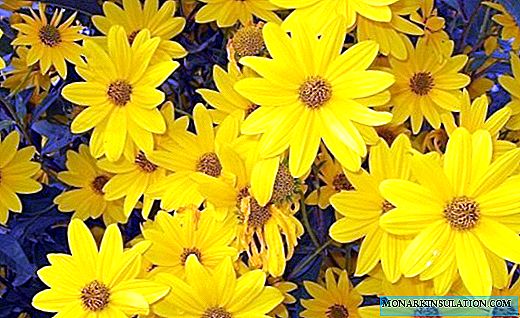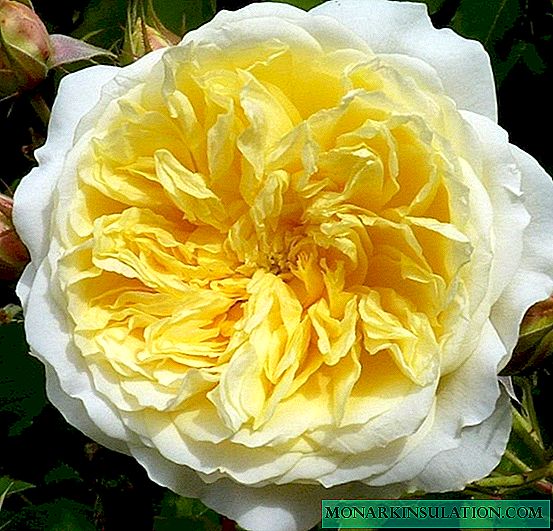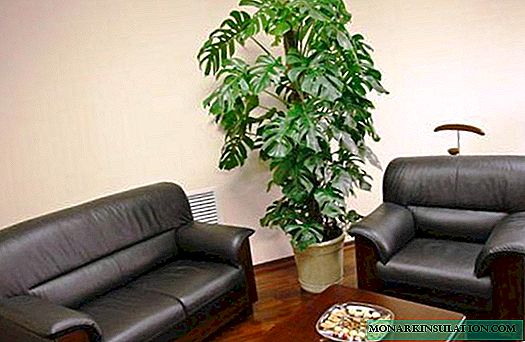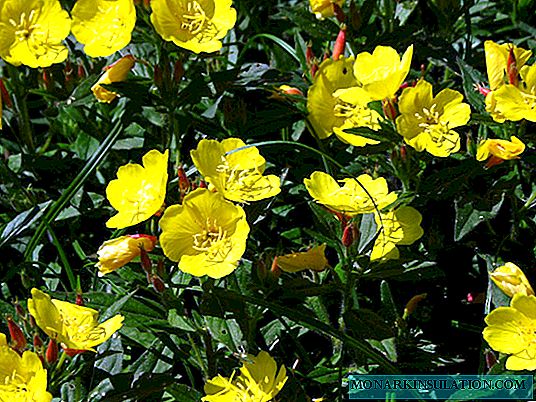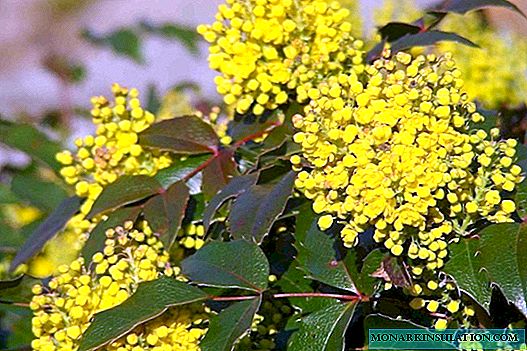
The hedge on the site has advantages over a wooden or mesh fence. Aesthetically attractive, does not create the impression of a blank fence, takes any given shape. What plants successfully cope with the role of hedges, we will tell in the article.
Cotoneaster brilliant

Flowering shrub, native to Eastern Siberia. It blooms beautifully and luxuriantly with small white and pink inflorescences during the month, starting in May. Instead of flowers, inedible glossy fruits of a dark color later appear, adorning the cotoneaster until the frost. Smooth, dark green leaves in autumn take on all shades of red and orange, adding color to the gray landscape.
Combine several types of cotoneaster and create options:
- borders along paths or borders - the bush is planted at a distance of 50 cm from each other, trimmed at a low height equally;
- zoning - the allocation of individual zones or division into parts. Sheared from above to create one height or create a rectangular shape, similar to a small fence.
The crown of Cotoneaster can form any shape. Wait until it grows to 60 cm in height and pinch the tops of the shoots. After that, it will give lateral shoots, the crown will be more magnificent and it will be possible to give it an oval or rectangular shape.
Willow

In nature, willow is found everywhere in the middle latitudes, as well as in Central Asia. This is a small tree or shrub, with a lush spreading crown, long and flexible branches. Holly willow is loved by designers and gardeners for its rounded crown and ease of cultivation.
An unpretentious plant, lives on any soil, even sandy, tolerates temperature extremes, does not require additional watering. Prefers sunny places, but will adapt to anyone.
How to use willow:
- "living fence" - will hide the site from prying eyes and will become an obstacle to dust and dirt from the road, and also help hide unaesthetic areas
- to create alleys, tunnels;
- single landing.
Unpretentious, fast growing and decorative willows like gardeners, so it is most often used as a hedge around the perimeter. The willow has flexible branches, so you can form a fence of any shape by twisting them or cutting the landing.
Hawthorn

Shrub pleases the eye throughout the year. In spring and early summer it is fragrant with white and pink flowers, then with dark green glossy foliage. By autumn, greens are replaced by shades of red and burgundy fruits appear, hanging before the start of winter.
It adapts to any soil, tolerates frost and drought, loves lighted places, but adapts to partial shade. The hawthorn has a highly developed root system, rooted deep in the ground and spikes grow on the branches. Due to this, protecting the site can be no worse than a fence.
For what else gardeners love hawthorn:
- long-lived - lives up to 300 years;
- Hawthorn fruits are used in medicine and for harvesting for the winter - jams, compotes;
- easy to form a fence.
Saplings of hawthorn are planted along the perimeter, half a meter apart.
When the bushes grow to 50 cm, the upper shoots begin to trim to stimulate growth in width. Branches intertwine in a natural way, but you can make crosses of branches of neighboring bushes. forming an even denser fit. It is necessary to ensure that the planting thickness does not exceed 70 cm, so that fungi and pests do not start inside. An adult bush can reach a height of 2 m by the age of 20 years.
During the growth period, the young bushes are fed and regularly watered, then the hawthorn is regularly fertilized and sprinkled with sawdust below and monitored for growth, directing the shoots in the right direction and pruning.
Derain

The homeland of this shrub is Siberia, and it grows throughout the European part. Resistant to frost, drought, heat. There are many varieties that differ in color and shape of leaves, from pale green to pinkish shades, you can choose one or combine several. Unpretentious, fast-growing and aesthetically attractive, Derain decorates the site all year.
It blooms twice - at the very beginning and at the end of summer, blossoming with white and cream fluffy inflorescences. By autumn, the foliage begins to turn yellow, redden and clusters of white, black, reddish fruits appear. And in winter it looks spectacular against the background of white snow thanks to the crust of red, green or yellow.
Young bushes need watering and top dressing, removal of diseased shoots.
An adult plant does not require special attention to itself, only to form a beautiful and even hedge line you need to periodically trim it.
Mahonia

Designers like magic for their appearance and unpretentiousness. It blooms in large yellow spectacular inflorescences in early spring. Beautiful dentate green leaves turn red in autumn, last until eternal, and then change color again to dark green. In late autumn, bears fruit dark edible berries. Plus, Magonia is not susceptible to diseases and pests, grows well on sandy, gravel soils, is not afraid of frost ...
Magonia grows slowly and gives a less dense landing, so it is most often used for zoning places inside the site:
- borders for paths;
- allocation of areas for recreation;
- background for high-growing plants - they are combined together, creating bunk hedges.
At the beginning of growth, the plant is advised to shelter for the winter, regularly watered. Further special attention is not required, except to cut the shoots and form a crown to your liking.
Golden and alpine currants

It grows in nature in North America, in northern Mexico, and is bred in Europe, the North Caucasus. They love it because it blooms earlier than other shrubs, grows well in the shade, decorates the garden with a lush green crown and blooms with beautiful yellow flowers. At the end of summer, it bears fruitful fruits, from which harvesting is done for the winter.
It grows well on moist soils, is resistant to temperature extremes, is not prone to infection by pests and is great for curly haircuts.
Varieties with a lush crown - alpine and golden - are suitable for creating hedges. They branch from the very bottom, so they are suitable for such options:
- allocation of zones;
- additional protection against dust, noise;
- dense seats cover unaesthetic places;
- live fence along the perimeter.
Planted in the spring, at a distance of at least 1 meter from each other. Only young plantings are watered, fertilized regularly, an adult plant is pruned and fertilized. It adds 15 cm per year, so more often than once a year you can not trim. A hedge will form in 3 years of growth.
The live fence of the site not only decorates, pleases the eye with seasonal changes, but also brings edible and healthy fruits.

